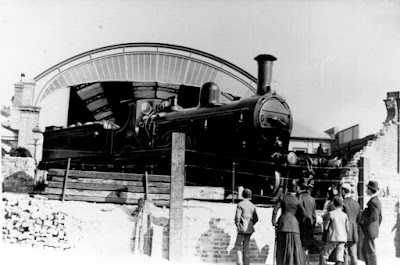More Railway information has been added to the RamsgateHistory.com website. A track of the old South Eastern Railway's line has been added to Google Earth including a detailed plan of the Town Station in 1872 and a plan of the Margate Station of 1896. Also now shown is the acurate location of St Lawrence loop.
The London, Chatham and Dover Railway line is also show together with a plan of their Margate Station in 1896, and their Ramsgate Harbour Station in 1872.
In 1926 Southern Railway amalgamated and joined these two rival routes at the same time as building a new Ramsgate Station, a plan of which which is also shown.
The track of Manston Military Railway is shown as is the Isle of Thanet Light Railway Tram network and plan of their main depot at St Peters.
The station plans and tracks are acurately located over current satellite images and can be made transparent to see exactly where they were located.
The Google Earth files can be found at: http://www.ramsgatehistory.com/interactive.html
Pictures of the Dunkirk Little Ships Return to Ramsgate 31.05.2025
-
The pictures should expand fairly well with a bit of clicking
In terms of chronological order the pictures have gone up backwards so you
may want to st...
5 weeks ago



















































.JPG)

